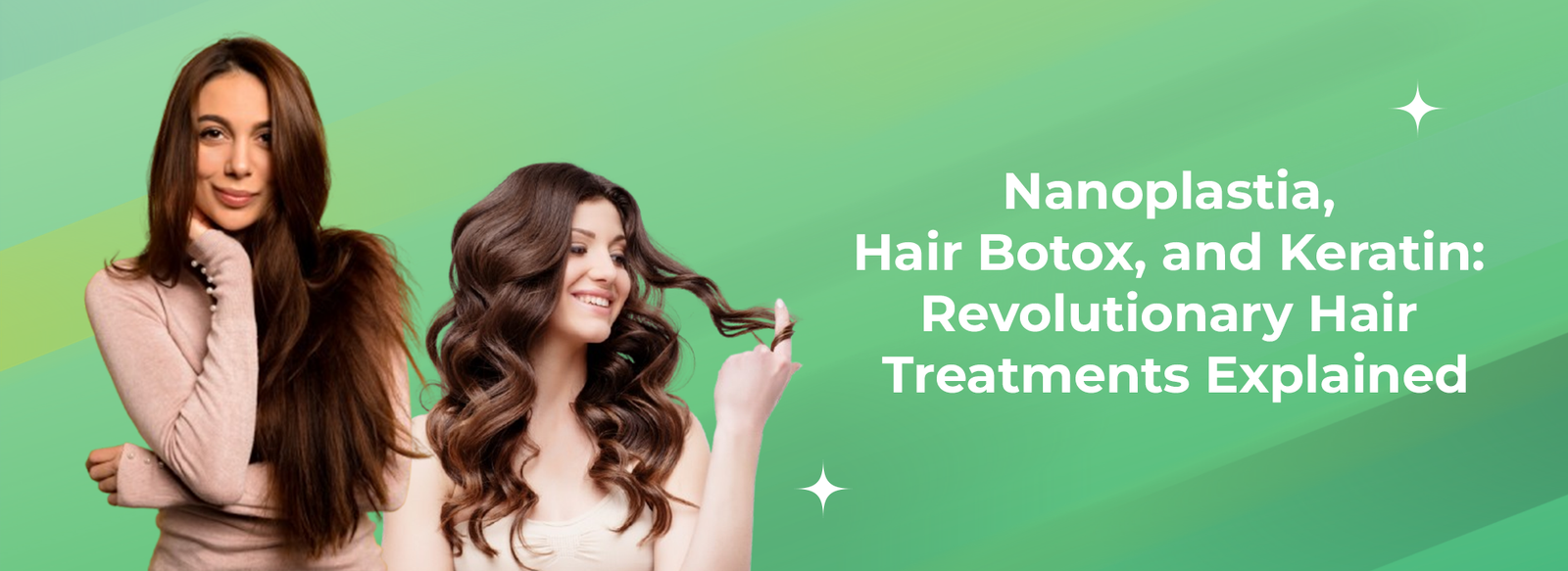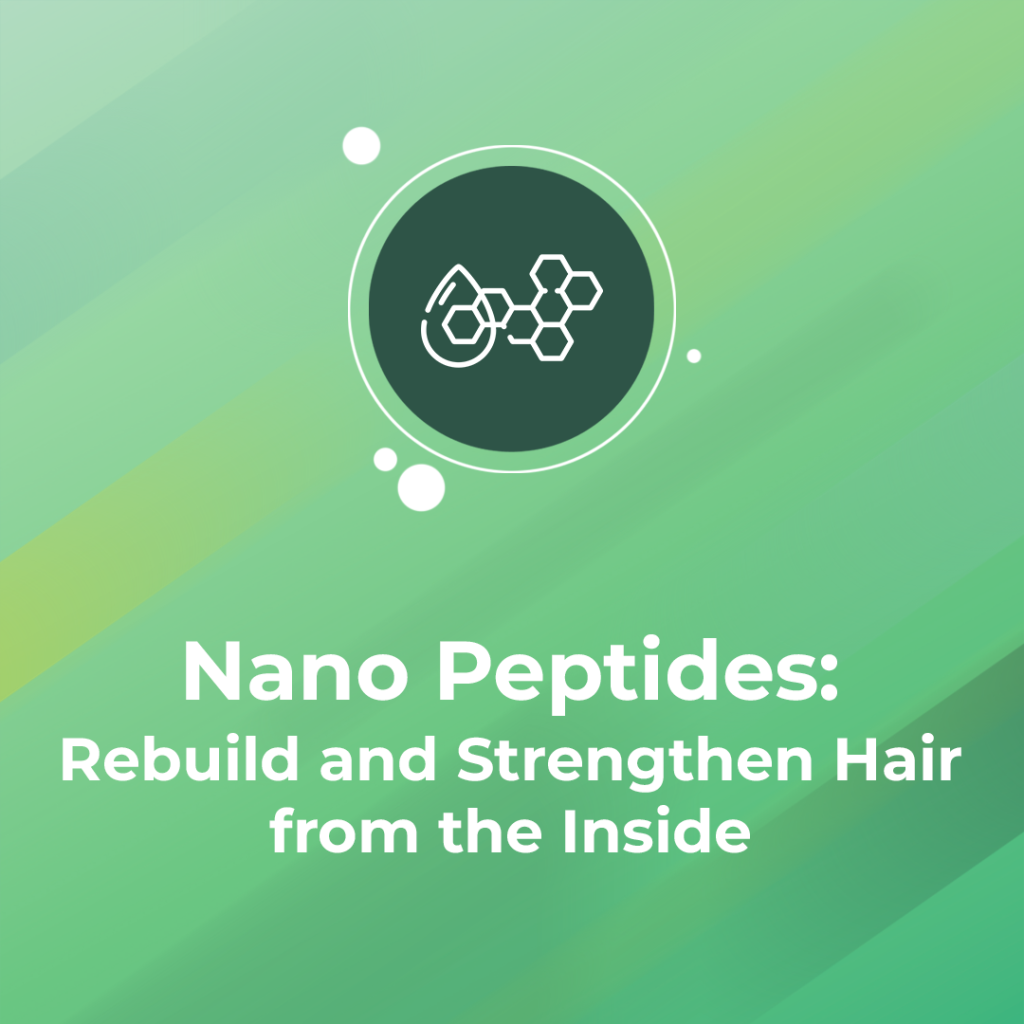
Nanoplastia, Botox, and Keratin Hair Treatments: A Comprehensive Guide to the Latest Products & Features
Introduction to Modern Hair Treatments
The hair care industry has evolved significantly in recent years, introducing advanced treatments like Nanoplastia, Hair Botox, and Keratin that promise smoother, healthier hair without the need for traditional harsh chemicals. As more people seek healthier, shinier hair without compromising texture and volume, these treatments have become popular. They aim to repair damage, reduce frizz, and make hair more manageable while maintaining a natural look. But how do these treatments differ, and which is best for your hair type? This guide explores the latest advancements in hair care treatments and their key ingredients.
Overview of Hair Treatment Categories
- Natural vs. Chemical Hair Treatments: Traditional chemical treatments often use harsh ingredients like formaldehyde, which can weaken the hair over time. In contrast, modern treatments like Nanoplastia and Botox for hair utilize natural proteins and peptides, reducing damage and promoting healthier hair growth.
- Protein-Based Treatments: These treatments focus on infusing proteins (like Keratin) into the hair shaft to repair damage. This has led to the rise of safer, more effective alternatives to older chemical straightening methods.
- Professional vs. At-Home Treatments: While salon-grade treatments often provide more consistent results due to professional application, at-home versions are becoming more popular, offering convenience at a lower price point. However, results can vary significantly based on product quality and application expertise.
Understanding Nanoplastia: A Revolutionary Hair Treatment
- What is Nanoplastia? Nanoplastia is a cutting-edge treatment designed to straighten and smooth hair without harsh chemicals. It penetrates deep into the hair cortex to reconstruct damaged fibers and nourish the hair from within.
- How Nanoplastia Works: This treatment uses nano peptides that are small enough to penetrate the hair shaft, filling in gaps and repairing structural damage. Once sealed with heat, these peptides bond with the hair to create a smoother, shinier texture.
- Nano Peptides in Nanoplastia: Nano peptides are tiny proteins that help rebuild and strengthen the hair from the inside out. They provide long-lasting hydration and repair.
- Benefits of Nanoplastia: Nanoplastia works wonders for damaged, frizzy hair. Unlike traditional chemical straighteners, it smooths hair, adds shine, and strengthens it against future damage while maintaining its natural wave or curl.
- Is Nanoplastia Suitable for All Hair Types? Yes, this treatment suits all hair types, especially those with frizzy, damaged, or chemically treated hair.
- Longevity of Results: Nanoplastia results typically last 4 to 6 months, depending on your hair type and maintenance routine.
- Potential Side Effects: Though it’s generally safe, some people with highly sensitive scalps may experience irritation during treatment.
Botox for Hair: What You Need to Know
- What is Botox Hair Treatment? Hair Botox is not the same as facial Botox. It’s a deep-conditioning treatment designed to repair damaged hair, reduce frizz, and enhance shine. The name comes from the fact that it rejuvenates the hair, much like Botox rejuvenates the skin.
- Hair Botox vs. Traditional Botox: Unlike traditional Botox, which uses botulinum toxin, Hair Botox contains ingredients like Keratin, Collagen, and Vitamins that fill in damaged areas of the hair.
- Key Ingredients in Hair Botox: The primary components include Keratin, Collagen, and other nourishing proteins that restore moisture and strength to brittle hair.
- Benefits of Hair Botox: This treatment restores damaged hair, adds volume, and improves the appearance of dull, lifeless strands.
- Who Should Consider Hair Botox? Anyone with damaged, dry, or frizzy hair can benefit from Hair Botox. It is also beneficial for those with color-treated or chemically processed-hair.
- Duration of Results: Hair Botox lasts 2 to 4 months, depending on hair care practices.
- Side Effects: Hair Botox has fewer side effects than chemical treatments, but some may experience minor scalp irritation.
Keratin Hair Treatment: The Classic Smoothing Solution
- What is Keratin Treatment? A keratin treatment infuses hair with Keratin, the natural protein that makes up hair structure. This treatment smooths and strengthens hair by bonding Keratin to the hair shaft.
- How Keratin Works: The Keratin in these treatments fills in the porous areas of the hair, leaving it smoother and more manageable. Heat seals the Keratin into the hair, making it less prone to frizz and damage.
- Types of Keratin Treatments: Several keratin treatment options are available, including Brazilian Keratin (which tends to contain formaldehyde) and formaldehyde-free versions that offer a safer alternative.
- Benefits for Curly/Frizzy Hair: Keratin treatments are highly effective for smoothing curly hair. They reduce styling time and keep hair smooth, even in humid conditions.
- Formaldehyde Concerns: Some keratin treatments use formaldehyde to lock in the protein, which can pose health risks. Formaldehyde-free versions are available and are considered safer alternatives.
- Results Longevity: Keratin treatments generally last 2 to 3 months.
- Drawbacks: Hair may feel flat or too straight, and using formaldehyde in some treatments raises safety concerns.

The Role of Nano Peptides in Hair Treatments
- What Are Nano Peptides? Nano peptides are tiny proteins small enough to penetrate deep into the hair, where they can rebuild and repair damaged areas.
- Benefits of Nano Peptides: They strengthen hair from the inside, helping to repair damage, enhance elasticity, and provide deep moisture.
- How Nano Peptides Improve Hair Structure: They improve hair’s overall structure, creating a healthier, shinier appearance that lasts longer than superficial treatments.
- Nano Peptides in Nanoplastia: These micro-particles penetrate deep into the hair cortex, rebuilding and fortifying damaged hair.
Understanding Keratin: The Protein Behind Strong, Smooth Hair
- What is Keratin? Keratin is a protein naturally found in hair, skin, and nails. It is essential for maintaining strong and healthy hair.
- How Keratin Repairs Hair: When applied as part of a treatment, Keratin fills in the gaps in the hair shaft, smoothing the hair and reducing frizz.
- Keratin Supplements vs. Keratin Treatments: Supplements provide Keratin from the inside, while treatments work on the outer layers of hair for immediate, visible results.
- Keratin: Present in both Keratin treatments and Hair Botox, Keratin is the protein that repairs the hair’s structural integrity.


Tannin in Hair Treatments: A Natural Solution for Smoother Hair
- What is Tannin? Tannin is a natural substance derived from plants and is known for its smoothing and anti-frizz properties.
- Benefits of Tannin for Hair: Tannin treatments are a natural alternative to chemical treatments, smoothing without harsh chemicals like formaldehyde.
- How Tannin Treatments Work: These treatments bond to the hair naturally, offering a smooth, shiny look without altering the hair’s structure as much as chemical straightening does.
- Tannin: Found in some natural hair treatments, Tannin is an organic compound known for its soothing properties. It is often used as an alternative to chemicals like formaldehyde.
Application and Maintenance: What to Expect from Each Treatment
- Nanoplastia Application: Hair is cleansed, and the Nanoplastia formula is applied. The nano peptides are then heat-sealed into the hair strands.
- Hair Botox Application: The hair is washed with clarifying shampoo before the Botox formula is applied. It’s left on for a specific period and then sealed with heat.
- Keratin Application: The hair is washed, the keratin formula is applied, and heat is used to seal the protein into the hair.
- Maintenance Tips: Use sulfate-free shampoos and avoid excessive heat styling to maintain treatment longevity.
Nanoplastia vs. Botox vs. Keratin: How to Choose the Right Treatment
- Hair Goals: For a more natural straightening effect, choose Nanoplastia. For deep conditioning and repair, go for Hair Botox. If your goal is long-lasting smoothness, Keratin is the best option.
- Hair Type: Nanoplastia suits all hair types but is ideal for frizzy or damaged hair. Botox is better for brittle, thin hair, and Keratin works well on thick, coarse hair.
DIY vs. Salon Treatments: What You Should Know
- Are At-Home Treatments Effective? DIY treatments can be effective, but due to application techniques, the results may not last as long as those of professional salon treatments.
- Risks of DIY Treatments: Inconsistent results or potential damage from improper application.
- Salon vs. Home: Salon treatments generally last longer and provide more consistent results, but DIY treatments are more affordable.
Conclusion
The world of hair care has expanded to include advanced treatments that smooth and straighten hair and repair and rejuvenate it from within. Whether you choose Nanoplastia, Hair Botox, or Keratin, each treatment offers unique benefits based on your hair type and goals. As these treatments evolve, the emphasis shifts toward healthier, safer alternatives that reduce damage while delivering sleek, shiny hair. Understanding the differences between these treatments and how they work can help you make the best decision for your hair.
Frequently Asked Questions (FAQs)
Nanoplastia is a more natural smoothing treatment that uses nanopeptides, while Keratin relies on protein bonding for long-lasting frizz control. Nanoplastia is less harsh and retains a natural hair texture.
All three treatments are safe for color-treated or chemically processed hair, though it’s best to consult a stylist for optimal results.
Waiting at least 3-4 months between treatments is recommended to avoid overprocessing your hair.
There is no recovery time; however, you may need to adjust your hair care routine to preserve the results.
No, these treatments typically make hair smoother and shinier without adding oiliness.
Yes, men can benefit from these treatments, particularly if they have frizzy or damaged hair.
Keratin treatments are the best option for severe frizz as they offer the longest-lasting results.
Nanoplastia and Hair Botox are less likely to affect natural curl patterns, while Keratin treatments may straighten and relax curls.


